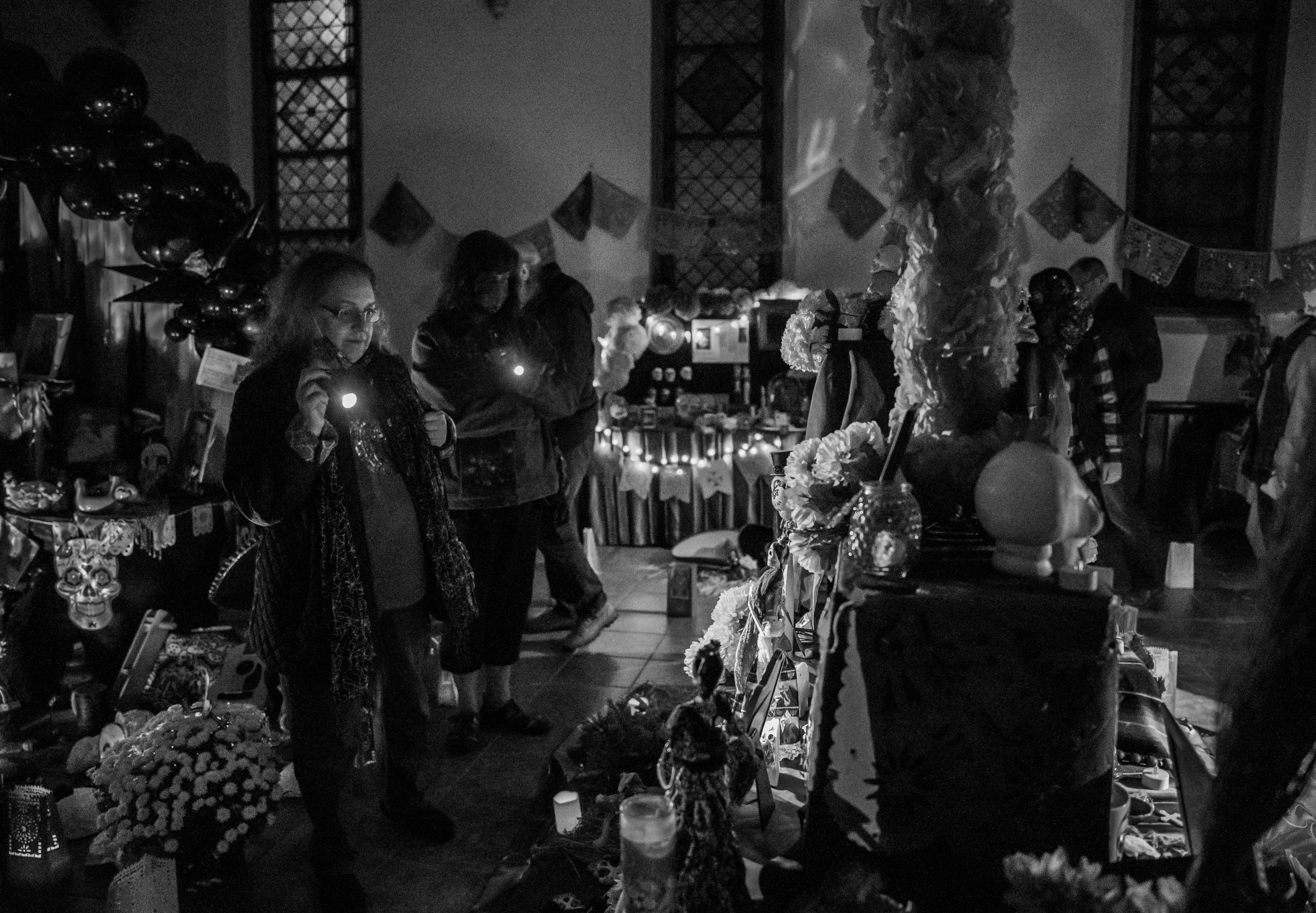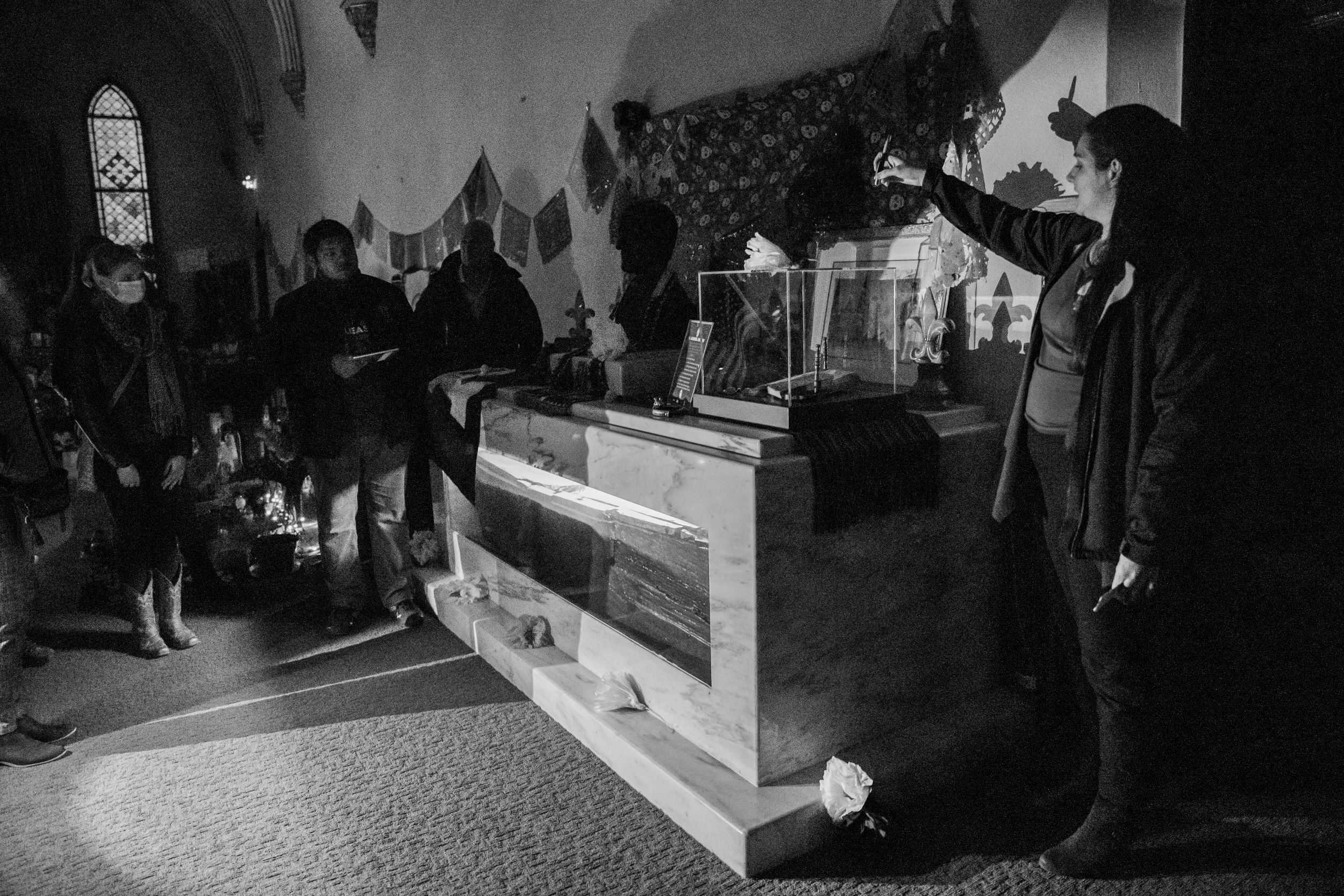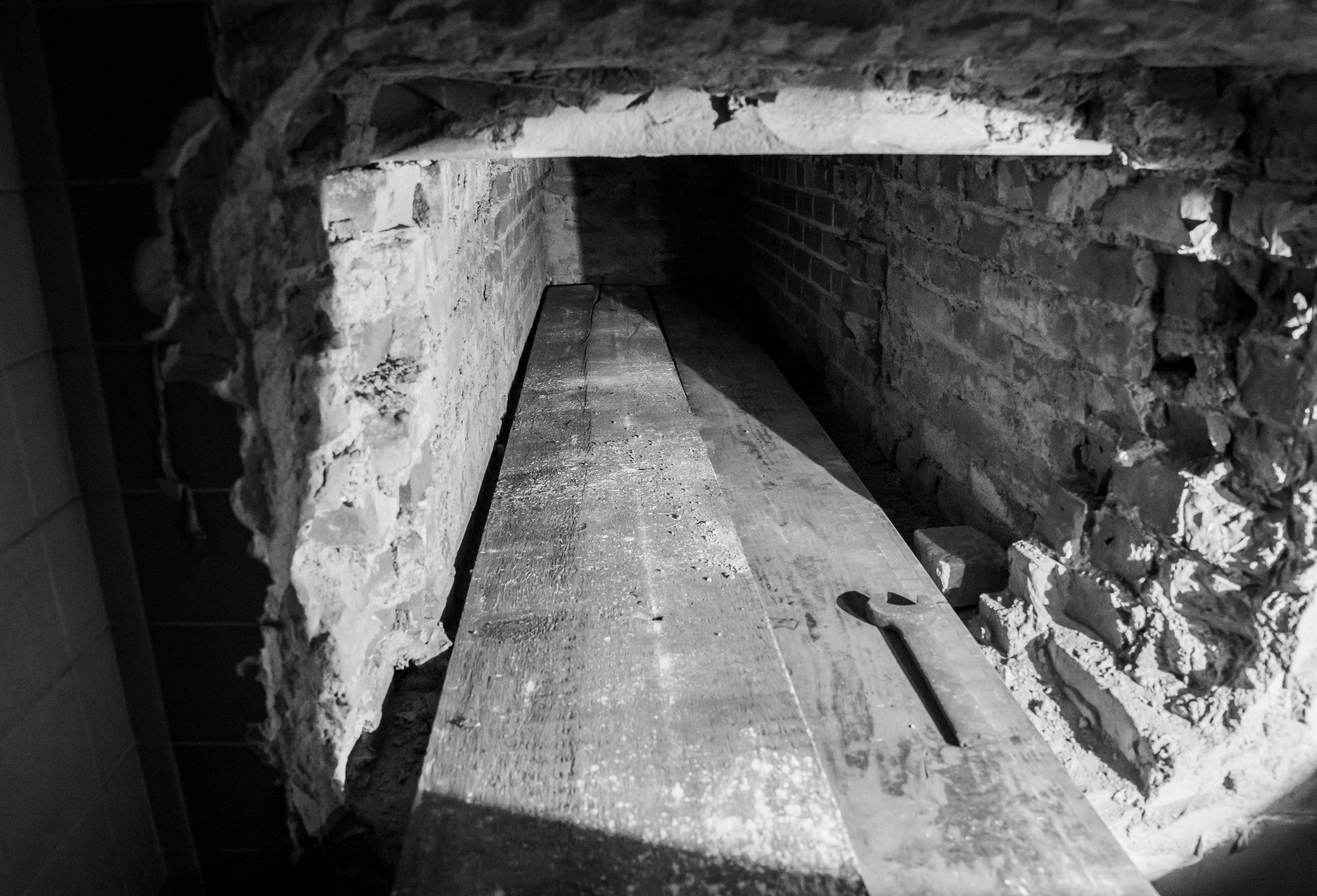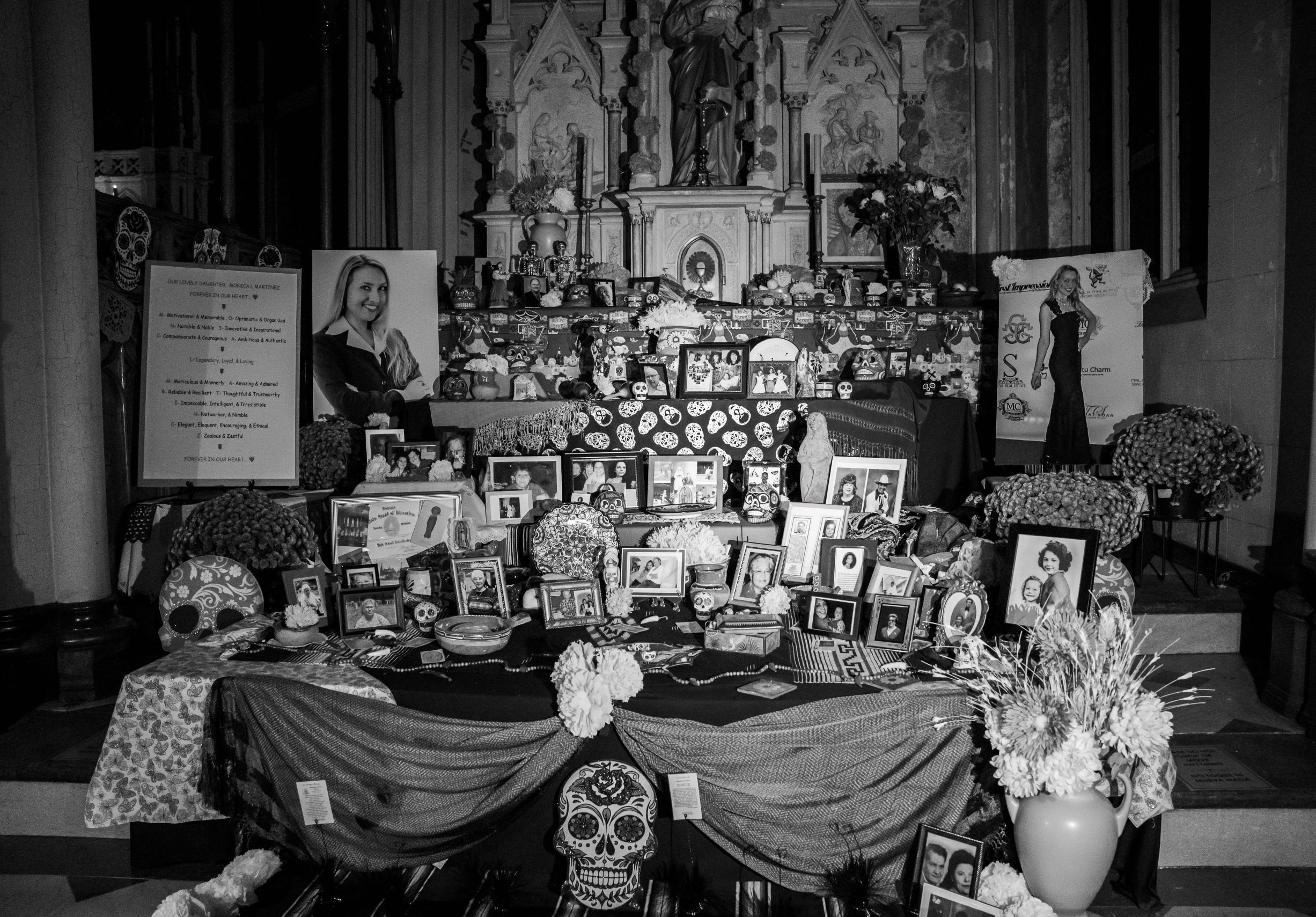Guests navigate through darkened nooks and crannies, hear saintly stories and reflect on St. Francis' well-heeded warning: 'Memento mori'
DETROIT — The cold, blustery weather set the scene at the Basilica of Ste. Anne.
The creaks in the choir loft seemed louder, the darkened nave had a mysterious feel about it, and the deep, dark sounds from the parish’s 1886-built organ set the mood for what was a unique church tour.
"Ste. Anne After Dark" has been happening for five years, said Kristen Andree, director of the apostolic center at the Basilica of Ste. Anne, who gave a tour to around 20 people Oct. 25 in the neo-gothic church, exploring the history of Ste. Anne, the church’s accepting nature when it comes to death and some “spookier” saintly stories.

“'Ste. Anne After Dark' is really a mix of the holiday season with Halloween, All Saints and All Souls Day coming up, with some spooky, saintly stories and talking about some of the saints being martyred in ways we don’t talk about day to day,” Andree said.
"Ste. Anne After Dark" doesn’t turn the church into a haunted house or some sideshow attraction; visitors still have a sense of reverence while taking in the statuary and darkened stained-glass windows that are intertwined with Detroit history.
Points of the tour include the history of the indigenous “Mound Builder” civilization — the namesakes of Mound Road in Macomb and Wayne counties — who lived on the peninsula before the Chippewa, Ojibwa and Potawatomi moved to the area in the 1600s and the French who arrived “on the straits” on July 24, 1701, and built Ste. Anne two days later.

“There is such a diverse history here; you see that through our annual novena, celebrating all the cultures, from the French, the English, the Americans, the Native Americans and now the Mexican-Americans, who have come to Ste. Anne and contributed to the parish in some way,” Andree said. “When you think of the sheer volume of history, how long the institution has been around — the Americans didn’t move westward until the Proclamation of 1793. Ste. Anne was almost here for 100 years at that point.”
Tourists learned about the Catholic Church’s three parts: the Church Militant (those on earth), the Church Suffering (those in Purgatory) and the Church Triumphant (those in heaven), which are the reason churches are bedecked in images of saints, who are present at every Mass.
Andree noted how prominent Detroit families, such as Livernois, Groesbeck and Campau, donated stained-glass windows to the parish, explaining the familiar tropes that go along with each saintly depiction.

Tour participants learned of some of the more macabre stories of saints, such as St. Cecilia singing in a cell where she was confined by Roman oppressors who wanted to starve her to death, or St. Francis carrying a skull around with him and proclaiming “memento mori,” (“Remember that you will die.”)
Andree also took participants "behind the scenes" of Ste. Anne, allowing visitors to "see things you wouldn't normally see on a church tour," she said.
Unique points of interest included a look inside Ste. Anne’s 135-year-old organ, a trip down to the original location where the famed Fr. Gabriel Richard was buried, and even a peek into the tomb where Fr. Richard currently resides in Ste. Anne’s chapel.

“I learned a lot of Detroit history, and it was really cool to see the church all dark and spooky,” said Audrey Cialek of Royal Oak. “It was really cool to see all the stuff for Día da Los Muertos (Day of the Dead) and learning about how those traditions and that holiday is intertwined with All Souls Day. I definitely would recommend this to someone else. It was cool to see the church in a different ambiance at night. I didn’t think I’d see the burial place of Gabriel Richard; I didn’t know that was here.”
Andree hopes the church tour encourages people to think about the history of Ste. Anne, but also to reflect on the Church’s view and teaching on death.
“The tour plays into the culture of the season with Halloween, thinking about spooky things, and the weather really cooperated with the wind howling tonight,” Andree said. “But we wanted it to be something that makes people think. We’re not trying to scare people here; this isn’t a haunted house. But we all know we’re going to die someday.”
Copy Permalink
Parish life












